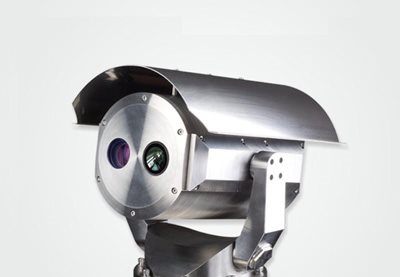
In the current explosion-proof video surveillance market, explosion-proof high-definition video surveillance has become a mainstream trend, but the major problems faced by explosion-proof high-definition video surveillance are also extremely difficult to solve. In terms of transmission and storage, system integrators can solve them through high-cost investment; display and management require high-definition manufacturers to spend some energy to improve the underlying software and hardware; in the improvement of night vision, the investment is relatively less It is also a solution that can easily improve user satisfaction. Compared with standard-definition video surveillance, the advantages of high-definition network monitoring are obvious, but through the marketing of these years, the following five major problems will be encountered in the popularization of explosion-proof high-definition video surveillance. Let's take a look at these five major problems and their solutions with the World Science and Technology!
1, transmission problems:
Explosion-proof HD network cameras generally use 720P or 1080P solutions. If you want to achieve the desired image effect, you need 2-8M network bandwidth. If there are hundreds of points in a system, the data flow of the entire network will be quite Large, and the video stream is a real-time data stream, which will continue to put continuous pressure on the network-related switching equipment, which requires sufficient homework in network planning. At present, due to the continuous reduction of fiber optic cable costs, local area networks can fully use
Optical Fiber plus high-performance switches to form a high-speed network. With the popularity of broadband networks, the light-returning copper retreat brings us cheap high-speed Internet. It is not too long for the remote to perform explosion-proof HD video image transmission.
2, storage problems:
Transmission refers to the huge problem of data flow. If the data is aggregated to the center or stored by each node, the pressure on the central entrance bandwidth and the storage capacity are a big challenge. At present, only heavy investment can be made in IPSAN and storage media. IPSANhao adopts embedded architecture, and the number of plug-in boards is much less, and the stability is high, but the disadvantage is that the compatibility is poor, and the secondary development is not flexible. Most of the NVR products on the market are based on the X86 architecture, that is, the server plus the array card, the application software, the server and the disk array are combined in one, and the compatibility is better. If IPSAN is used, the storage medium needs an enterprise-class hard disk, so that the IPSAN can enjoy the advantages of data storage speed and security. For some small and medium-sized systems, if the storage time is not required to be too long, and the security requirements of the data are not too high, it is completely possible to use the mainstream server on the market to complete the storage function.
3, night vision problems:
In the case of sufficient daylight, it is very easy to achieve high definition. Once the application is weak or requires nighttime monitoring, HD becomes a hero's useless place. Since most of the explosion-proof high-definition cameras use CMOS sensors, their sensitivity to light is low. If they do not cooperate with infrared fill light, it will be dark at night, and most of the time period for our explosion-proof monitoring is to be at night. This will make the explosion-proof HD video system with high expectations become a display. At present, Shiguo Technology can provide infrared fill light scheme, IRCUT technology and low illumination chip in night vision.
4. Display aspect:
Many explosion-proof monitoring manufacturers only pay attention to the pixels of the front-end explosion-proof camera, but have not developed corresponding explosion-proof high-definition video decoders. They can only watch high-definition images around the screen of the PC, and cannot separate HD images. Displayed on the big screen. For the video wall on the high-definition screen, a high-definition decoder has been developed on the market, and the high-definition graphics transmitted from the front end are effectively restored, and connected to the high-definition input interface of the large screen to display the high-definition picture on the screen.
5. Management:
Many high-definition manufacturers still use the traditional analog explosion-proof camera to do explosion-proof high-definition cameras, buy off-the-shelf hardware solutions, use third-party MPEG4 standard algorithms, just provide a network interface, simply carry out digitalization, as for the back platform Managing the hardware and data flow of the camera is impossible because it does not have the underlying core algorithms and techniques. Whenever possible, choose a front-end device with a rich hardware interface, such as alarm, SD card, intercom, audio, 485, etc. In the project plan, you can flexibly combine according to the requirements of Party A, without having to separately customize the function. Software must have multiple access methods, such as WEB, client, large platform, etc., can provide SDK development kits, and can be flexibly connected with third-party software. Functional modules should be as complete as possible, such as alarms, streaming media, storage services, etc., and can be used directly in the project. Behind our enthusiasm for explosion-proof HD products, we should be more calm to analyze the above-mentioned practical problems, how to solve each problem, which is a problem that many explosion-proof monitoring manufacturers need to consider.
Laser Application
CNI can offer complete solutions in a wide range of applications from scientific research, biomedicine, and environmental sciences to industrial materials processing, microelectronics, avionics, and entertainment. The applications include Laser optogenetics and neuroscience, Particle Image velocimetry (PIV), holography, Confocal Laser Scanning Microscopy and so on.

|
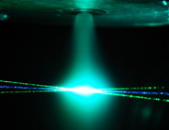
|

|
|
Laser Optogenenics & Neuroscience
|
Structured Laser/ Line Laser for PIV
|
Confocal Laser Scanning Microscop
|
|
CNI offers many lasers for Optogenetics and Neuroscience with free space or pigtailed versions. The accessories are also available for a complete solution
|
By a transient, multi-point, non-contact hydrodynamic speed method, PIV is widely used in particle flow studies, wind tunnel flow measurements, etc.
|
CLSM consists of confocal microscopy, laser and data acquisition system. CNI offers many lasers of free space and Multi-wavelengths SM fiber couplings.
|

|

|
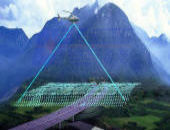
|
|
Holography
|
Communication and Imaging
|
Lidar
|
|
CNI provides coherent length >50m, high stability SLM lasers, it is widely used in holographic microscopy, holography security, holographic interferometry, etc.
|
High communication quality, small loss and long distance transmission, strong confidentiality and light structure. Mainly used for communication system.
|
Lidar is a system consists of laser, telescope collection device and signal analyzing device with high accuracy and high spatial resolution remote sensing.
|
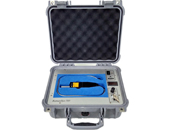
|
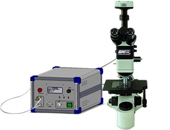
|
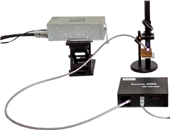
|
|
Raman Spectrum Solution
|
LIF: Laser Induced Fluorescence
|
LIBS: Laser Induced Breakdown
|
|
It shows spectrum for the
materials characteristic identification.
Used for Jewelry appraisal, forensic appraisal, and others materials.
|
The most senior detection technology, LIF is widely used in biology, chemistry, environmental sciences, agriculture, and other applications.
|
Long-distance, real-time measurement system. Small size, and quick response, no damage, versatility and variety for the samples, is used in hash conditions.
|

|
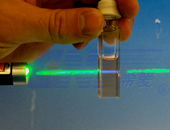
|

|
|
Laser for Medical Treatment
|
Up-conversion Luminescence
|
Laser Processing
|
|
Lasers can be widely used in clinical disciplines, CNI provides 532 nm, 561 nm, 589 nm, 1064 nm... for medical treatment.
|
CNI provides 808 nm, 980 nm, 1532 nm and other wavelengths laser sources for up-conversion luminescence.
|
CNI Q-switched DPSS lasers and high power water-cooled lasers are widely used in Laser Marking, welding, drilling, cutting, cleaning, etc.
|
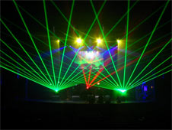
|
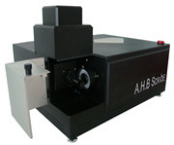
|
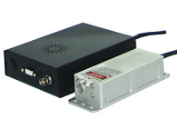
|
|
Laser Show
|
Diamond Micro Marking Machine
|
Microlaser for Diamond Planning
|
|
CNI offers high reliable green, blue, red
lasers, and RG & RGB lasers for laser entertainment. These lasers are compact and specially designe for laser show.
|
CNI offers total solution for diamond planning, with minimum character height 40um and marking width 5um.
|
CNI offers DPSS 1064nm passively Q-switched microlaser source for diamond planning.
|
Laser Application,1064nm Laser Pointer,Q Switched Laser,Blue Wavelength Laser
Changchun New Industries Optoelectronics Technology Co., Ltd. , https://www.lasersciences.com















